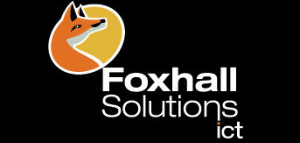
1. Convergence:
Convergence is about having one bunch of hardware and wires to carry all of your business; voice, video, media and data. It’s very worthwhile and technically achievable. Your network may need to pass some health-checks and it’s possible that you’ll need to adopt a roll-out that covers network upgrade prior to the full implementation of VoIP – but convergence can halve your services cost-per-desk. Convergence makes it easy and cost-effective to carry out additions and moves & changes – without the need for new cable runs or complex [expensive] configuration changes.
2. It’s all software:
Some traditional PBX vendors try to make it look like its hardware, with product logo’s placed prominently on the boxes – but it’s not! VoIP servers are commonly Windows or Unix/Linux Operating Systems, running on off-the-shelf Server Hardware available from many vendors known to the IT world. This also means that since we are just dealing with a stream of TCP/IP packets, it’s becoming easier to interface the VoIP phone systems to other Management Information Systems, like call data collection, display and recording facilities. It is important to choose the right hardware to put the system together with, but it’s no longer proprietary.
3. Call Routing control:
This can be useful if you find you have geographical areas or call types that you want the best call rates into. Suppose you find a SIP carrier who gives good rates for calls to mobile numbers, but they are not competitive for calls to land-lines … Your VoIP switch can support multiple SIP Gateway accounts and provide a simple but effective way to route your outbound calls through them. For example, you can configure the VoIP switch to detect the 07 dial code prefix used to call mobiles, and have those calls automatically routed through that gateway giving the best tariff. All other calls may be routed through another – or other gateways – where tariffs are better for them. Fall-back strategies cover 2nd and 3rd choice routes in case the gateway is at capacity.
4. Fidelity:
We are often asked if the call quality will be as good as “our old PBX”. In most cases it’s actually better! Not only do VoIP systems offer good audio standards, but they do it dynamically – automatically adjusting the amount of voice compression, to compensate for low bandwidth call paths.
5. Pick & Mix:
As per 3 above, we can change and add Internet Telephony Service Providers (ITSP’s), to get the best tariff rates for the different types of calls you make e.g. for local, national, International, International to particular countries, and for mobile services. You can even use an ITSP that gives good rentals for SIP Trunks and numbers for incoming calls, but you can guide calls out through completely different ITSP’s with more competitive call tariffs. In addition, there are numerous manufacturers of SIP compliant VoIP hardware for both gateways and phone-sets. It is possible to choose the hardware to build your VoIP telephone system from IT resellers with whom you have purchasing power for IT projects – and to use servers, gateways and phones that you are familiar with. However, it’s also possible to enhance systems to meet your specific requirements by using a different type of gateway or phone with unique features, that fit your project.
Contact Foxhall Solutions for a free consultancy to discuss how your business can benefit from the latest telephone system technology ….

Recent Comments